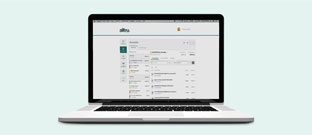You already made it through the hardest part: buying a home. Now, you might be thinking about refinancing your mortgage. Let’s see if it’s the right choice for you.
Both your financial situation and economic conditions can change drastically from the time in which you bought your home. Your monthly budget may get spread too thin due to other major expenses, or on the other hand you may be able to pay off your home loan more quickly thanks to getting a raise. Whatever the reason is, it’s likely that interest rates have changed since you first bought your home, affecting how much it costs to borrow money. Due to unpredictable factors like these paired with fluctuating interest rates, it’s very likely that the mortgage you first took out when you bought your home won’t remain the best deal for you.
Thankfully, you don’t have to stick with the same mortgage if better options come along. Refinancing allows you to make changes to your mortgage that will allow you to either lower your monthly payment, pay down the loan more quickly, or switch to a different type of mortgage entirely. Keep reading to help you decide which option makes sense for you.
To learn more about mortgages, check out this article on the home buying process.
Here’s everything you need to know:
What is refinancing?
When you refinance your mortgage, you essentially take out a brand-new loan to completely pay off your old one. From there, you make payments on the new loan only. It’s almost like your new loan cancels out the old loan. There is no limit on refinancing – you can refinance multiple times over the course of your mortgage. However, some lenders prefer that you wait at least a few months after a refinance before going through the process again.
One thing to watch out for: if your original mortgage charges a penalty for early repayment, then refinancing (and therefore paying that loan off early) will trigger that penalty. Ask your lender if this fee applies before refinancing.
Why should I refinance my mortgage?
- Lower the interest rate: This could mean lower monthly payments and a lower amount of interest paid during the rest of your loan period.
- To shorten the mortgage’s term: Shaving even a few years off of your mortgage can save you thousands in interest costs and allow you to build equity on your home more quickly.
- To lower the monthly payments: If your budget can no longer sustain your current mortgage payments, lengthening the term can lower what you pay each month. The downside is you’ll pay more in interest over the life of your loan. If you’re struggling to make mortgage payments, this type of refinancing is the right decision for you.
- To switch to a different mortgage type: Homeowners can refinance to switch their mortgage types. For example, you can switch from an adjustable-rate-mortgage (ARM) to a fixed-rate mortgage, or vice versa. Your lender will know which type is right for you.
At this point, you may have decided you’d like to refinance your mortgage. Here’s a few more questions you might have.
How much does refinancing cost?
Although refinancing isn’t free, if it ends up saving you money in the long-run, it’ll be well worth it. It typically costs 2% – 3% of the amount you’re borrowing. You’ll need to repay closing costs, which vary depending on the size of your mortgage, the lender, and where you live. The average closing cost for refinancing is more than $4,000. Closing costs include a variety of fees: the mortgage application, property appraisal, loan origination, title insurance, and more.
How do I refinance?
Start the refinancing process by talking to your current mortgage provider and weighing what they can offer you in comparison to other lenders. Shop around for the best terms so that you have different options to choose from. Whether your finances have improved or worsened, refinancing could be the right choice for you.
Use our free Mortgage Refinancing Calculator to see how much you could save today. Refinancing could bring you major benefits and take you one step closer to reaching your financial goals, so we encourage you to look into it.




